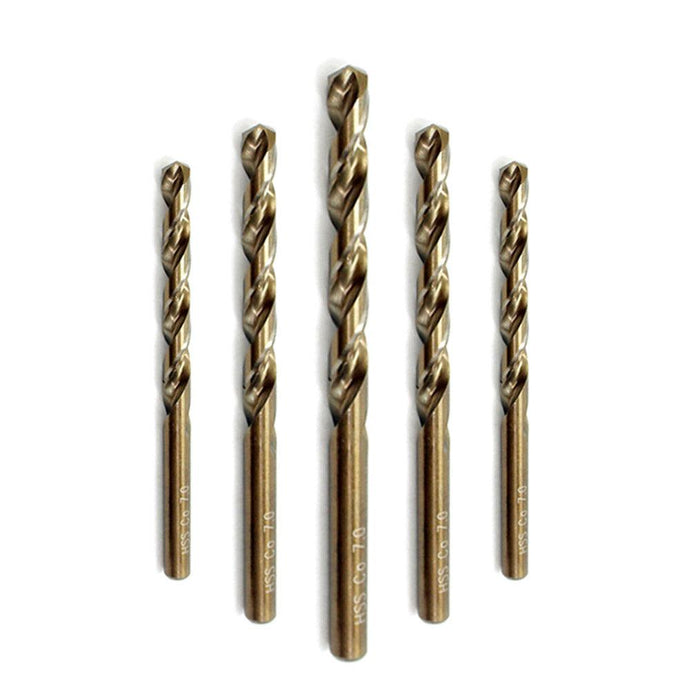The Power of Precision: Why Slow Twist Bits Are Ideal for Certain Drilling Applications
Drill bits come in many shapes and sizes, each suited for specific tasks. Among them, the slow twist bit stands out for its unique design and functionality, offering a distinct advantage in certain drilling applications. A slow twist bit, as the name suggests, features a reduced helix angle compared to standard twist bits, meaning the spiral flutes are less steep. This may seem like a minor adjustment, but it significantly alters the way the bit interacts with the material being drilled. While faster twist bits are optimal for certain materials, slow twist bits excel in scenarios where precision, control, and specific material removal techniques are critical.One of the primary reasons to use a slow twist bit is for enhanced control when drilling hard or brittle materials. The reduced helix angle means that the bit cuts into the material more gradually, which reduces the risk of chipping or cracking. This is particularly useful when working with delicate metals like brass or brittle materials like glass, ceramics, and even some plastics. In these cases, using a high-speed, aggressive bit could lead to material failure, causing costly mistakes or requiring time-consuming repairs. A slow twist bit minimizes stress on the material, allowing for a more controlled cut, which results in cleaner, more precise holes.
The slower removal of material by a slow twist bit also helps in situations where overheating is a concern. In many drilling operations, especially with metals, friction generates heat, and excessive heat can dull the bit quickly or damage the workpiece. Slow twist bits are designed to reduce friction and heat buildup, allowing the bit to stay cooler during operation. This is particularly important when drilling deep holes or working on heat-sensitive materials, where overheating could cause warping, deformation, or even tool failure. By maintaining a more consistent temperature, slow twist bits extend the life of both the bit and the material being drilled.
Slow twist bits also offer improved chip evacuation, especially in applications where the material being removed is dense or gummy, such as aluminum, copper, or softwoods. In standard twist bits with a faster helix, chips are evacuated quickly, but this rapid removal can lead to clogging in some materials. Clogs not only slow down the drilling process but also increase friction and heat, which can damage both the bit and the workpiece. Slow twist bits, with their more gradual flute design, allow chips to evacuate smoothly and steadily, preventing buildup in the flutes. This makes them particularly useful in deep-hole drilling, where maintaining clear flutes is essential for maintaining cutting efficiency.
In woodworking, slow twist bits can be especially useful when working with softwoods, laminated materials, or engineered wood products like MDF. These materials are prone to splintering or tearing when using high-speed bits, especially at the exit hole where the bit breaks through the surface. A slow twist bit, with its controlled cutting action, reduces the risk of splintering and ensures a cleaner, smoother hole. This makes slow twist bits ideal for tasks where the finish of the hole is important, such as when installing furniture hardware or making precision joinery cuts.
Another advantage of slow twist bits is their effectiveness in drilling through thick materials. In many industrial and construction applications, drilling through thick metal plates or dense materials like concrete requires a bit that can maintain stability and cutting performance over longer periods. Slow twist bits are less likely to wander or drift, thanks to their steady, controlled cutting action. This precision is essential for maintaining accuracy when drilling deep holes or aligning multiple holes in a straight line. Moreover, their reduced rate of material removal ensures that the bit doesn't become overloaded with chips, which can cause the bit to seize or break during operation.
In terms of longevity, slow twist bits generally experience less wear and tear compared to their faster-twisting counterparts. Because they remove material at a slower rate and generate less heat, they are subject to less friction, which prolongs the sharpness of the cutting edges. This makes slow twist bits a more economical choice for projects that require consistent, high-precision drilling over time. In applications where tool wear is a concern, using a slow twist bit can help extend the lifespan of the tool, reducing the need for frequent replacements and minimizing downtime.
Lastly, slow twist bits are valuable in situations where the user needs to maintain fine control over the drilling process. Whether working in intricate metalworking or precision woodworking, these bits allow for a more deliberate, steady approach. The reduced spiral angle gives the operator more control over the feed rate and pressure, making it easier to avoid mistakes that could arise from aggressive, high-speed drilling. This level of control is especially important when drilling pilot holes, creating threaded holes, or performing delicate finishing work.
In conclusion, slow twist bits offer several advantages in drilling applications that require precision, control, and careful material removal. They excel in situations where heat management, chip evacuation, and material integrity are key concerns. Whether you're working with brittle metals, softwoods, or thick materials, slow twist bits provide the accuracy and durability needed to achieve clean, precise results. For those seeking a bit that prioritizes quality over speed, slow twist bits are an excellent choice, offering long-lasting performance and versatility across a wide range of materials and projects.



